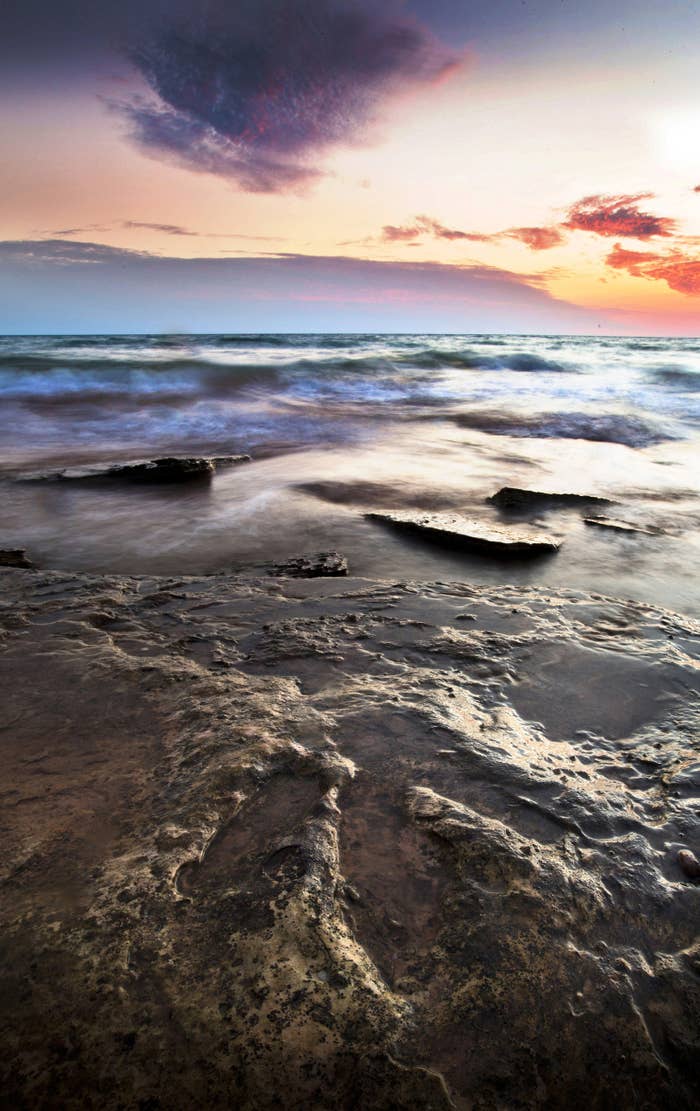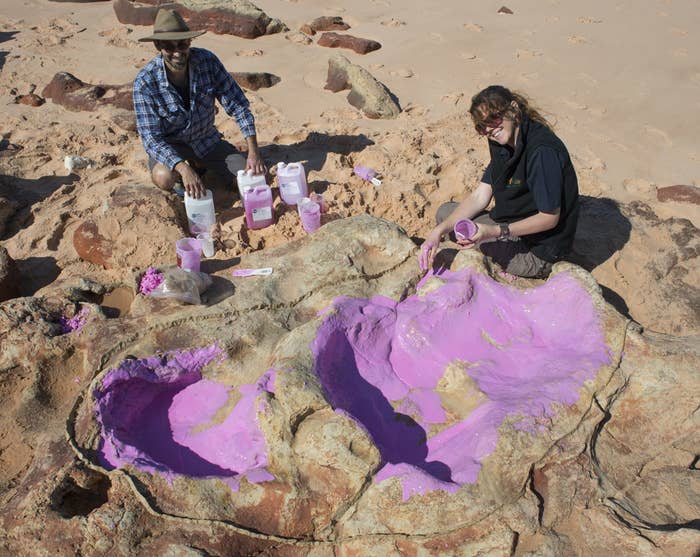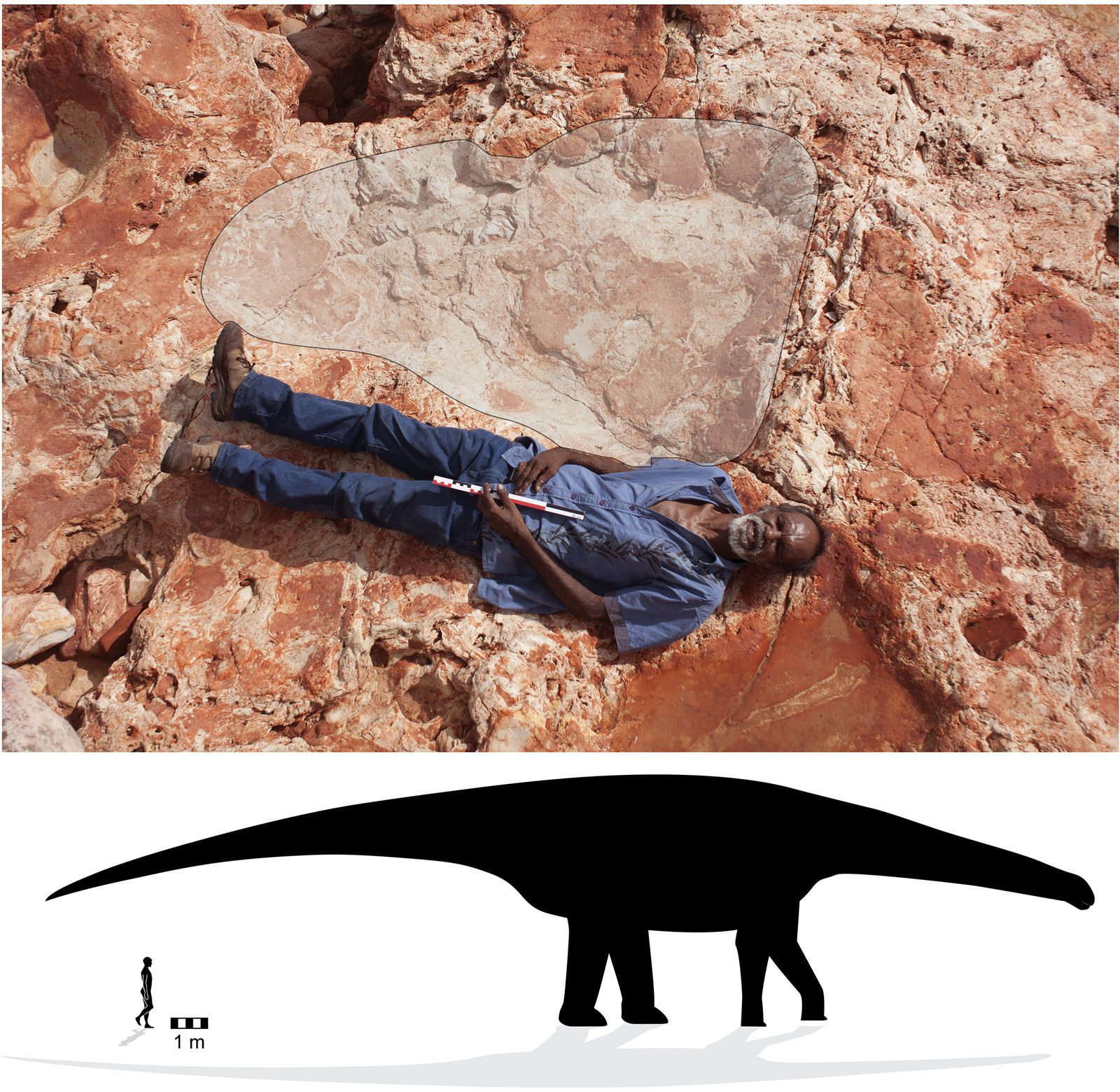One hundred and thirty million years ago, on a remote stretch of coastline in Western Australia, there were 21 types of dinosaurs roaming the landscape.

In what is now the Walmadany area of the Dampier Peninsula in northwestern Australia, sauropods, ornithopods and armoured dinosaurs coexisted on a vast river plain.
Sometimes the river system would flood, and as the water retreated dinosaurs would move across the muddy, sandy plain. Thousands of tracks were embedded in the sludge and preserved over time.
Extraordinary new paleontological research published in the Journal of Vertebrate Paleontology tells of the most diverse dinosaur community ever recorded.
"Nowhere else in the world has as many types of dinosaur tracks as this area," lead researcher Steven W. Salisbury told BuzzFeed News.
"With regards to how tracks formed and the layers they occur in, we can see that most of those dinosaurs were there at pretty much the same time. It gives us a snapshot of a real live dinosaur ecosystem.
The research has also seen the discovery of the largest dinosaur footprint ever recorded, and proves the existence of stegosaurus in Australia.
"Until we found these tracks, there was no indication at all that Australia ever had stegosaurus," Salisbury said.
"Now we know that at the start of the Cretaceous Period there were stegosaurus here. It’s filling out what we know about the distribution of certain types of dinosaurs in the Southern Hemisphere, where previously we had no information at all."
The painstaking process of documenting the thousands of footprints started in 2011, and involved researchers from the University of Queensland and James Cook University.
"We’ve had to contain our excitement for about six years," Salisbury said.

The behemoth footprints, the largest of which are 1.75 metres long, point to sauropods up to 5.5 metres tall – at the hips.
"That’s a conservative estimation," Salisbury said. "Beyond that, [with] the neck and the tail, you get a bit speculative, so we just focus on the hip height."
Salisbury says that at first they didn't spot the larger imprints.
"They were beyond the size we were looking for. As we found smaller ones that were the same shape, we realised the big ones were real."
Most Australian fossils come from the eastern side of the country and are between 90 and 115 million years old.

The discovery comes with a political backstory. In 2008, the WA government proposed a $40 billion liquid natural gas processing plant on the site.
But the Indigenous custodians of the land – the Goolarabooloo people – were aware of the significance of the region, and contacted Salisbury and researchers to come and look at the prints.
“We needed the world to see what was at stake,” Goolarabooloo Law Boss Phillip Roe said in a media statement.
The area has cultural significance for the Goolarabooloo people, as well as its paleontological importance.
"The dinosaur tracks form part of a song cycle that extends along the coast and then inland for 450 km, tracing the journey of a Dreamtime creator being called Marala, the Emu man," Roe said.
"Marala was the Lawgiver. He gave country the rules we need to follow. How to behave, to keep things in balance."
The area was heritage listed in 2011, and the gas project abandoned in 2013.
Salisbury said if the gas project had gone ahead, the dinosaur tracks and all they tell us about the world 130 million years ago would have been lost.
"It was unthinkable to think that such an amazing natural treasure could be destroyed for a gas hub, particularly when they could process it elsewhere," he said.
"The gas wasn’t there – it was 400km offshore."
